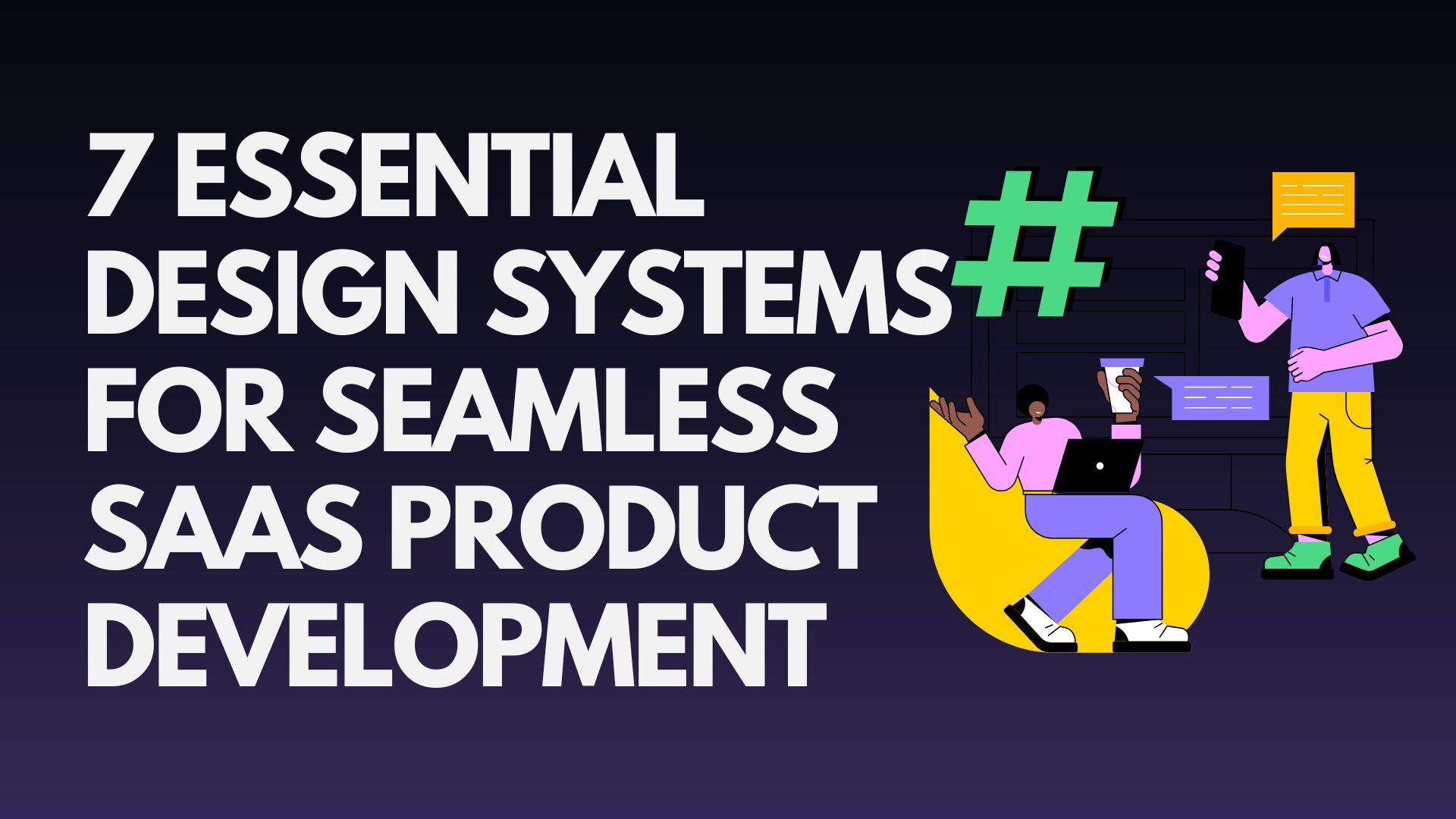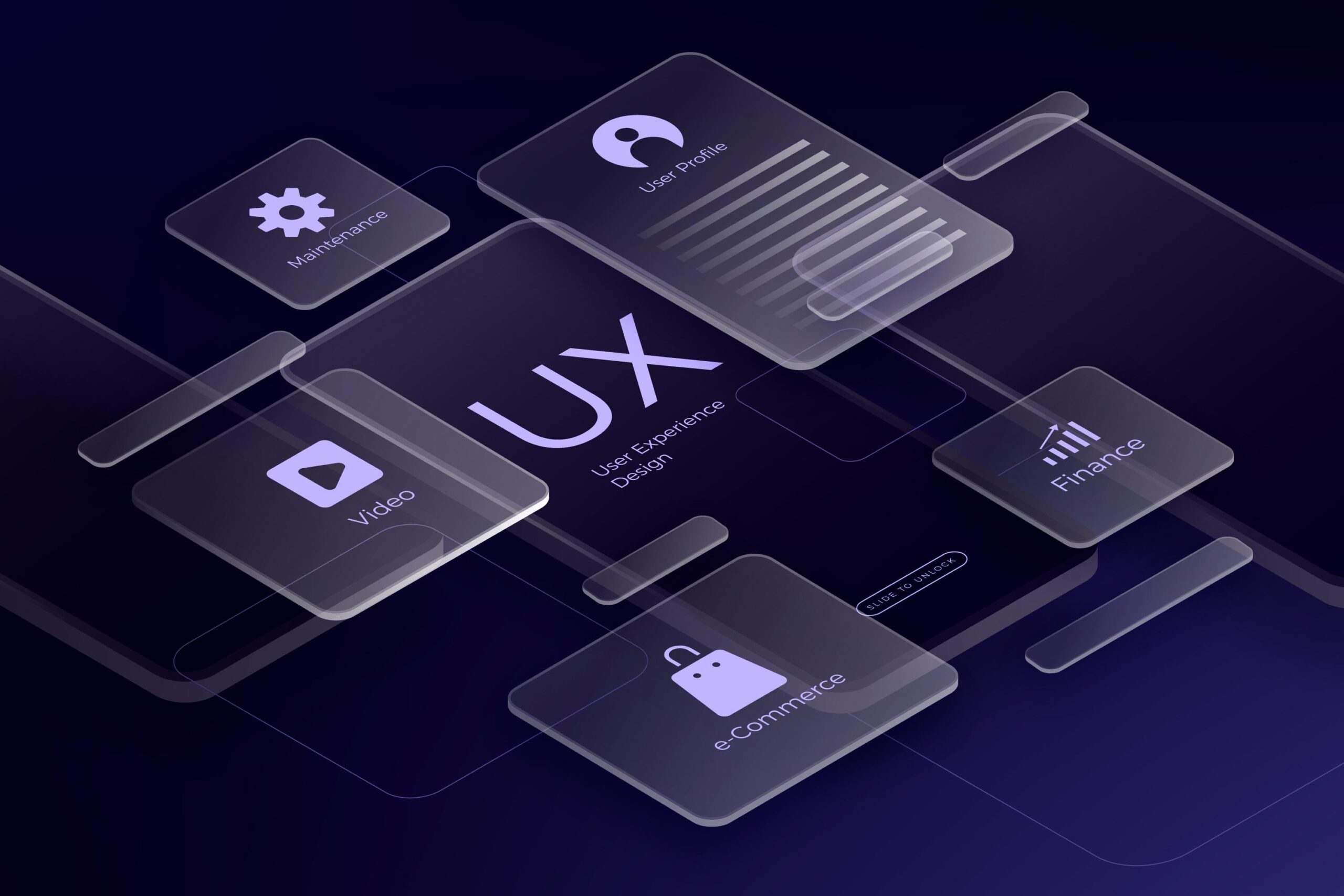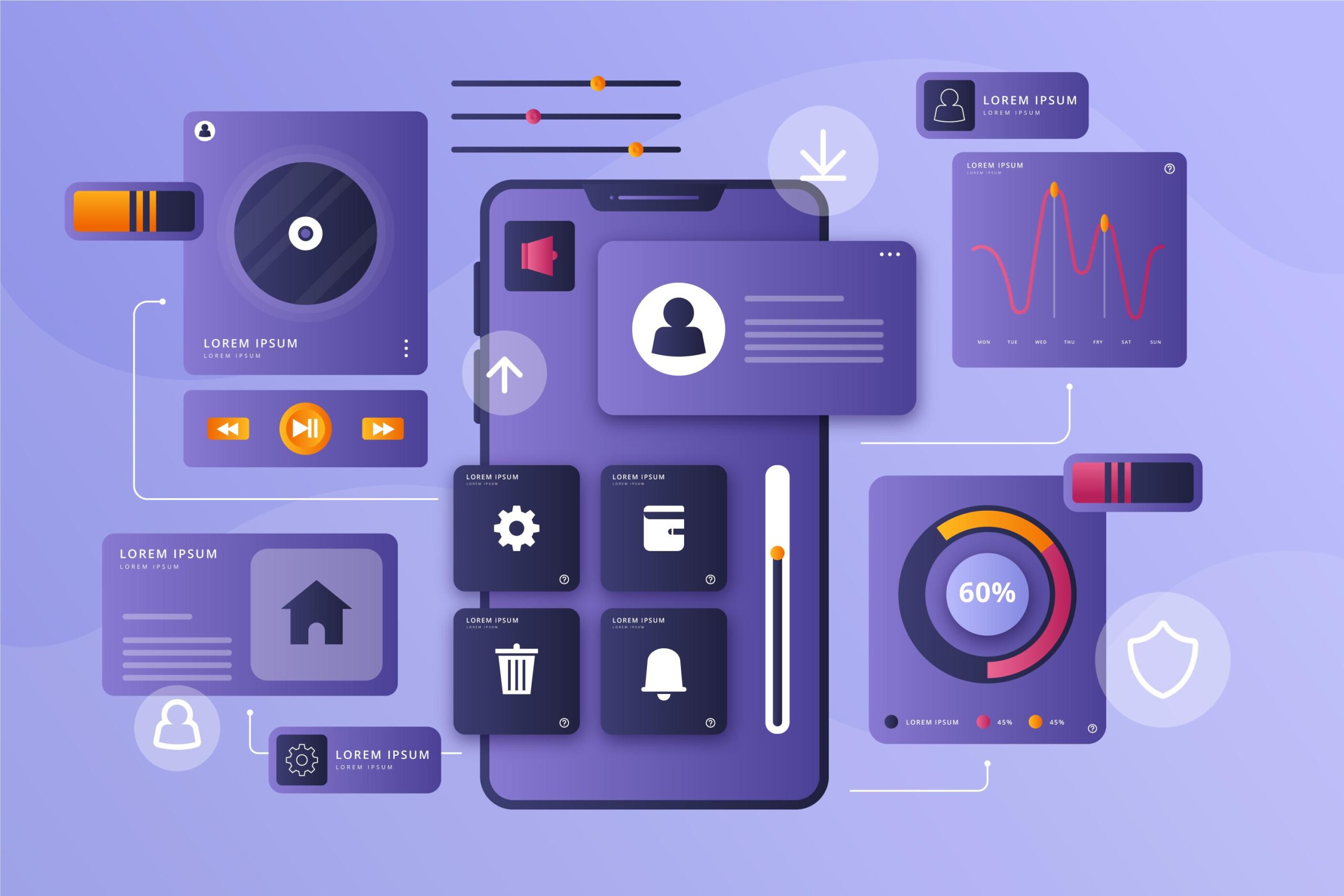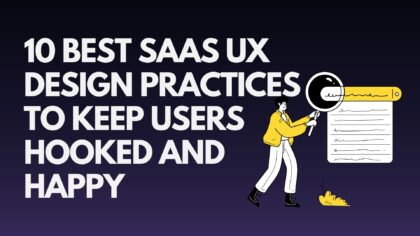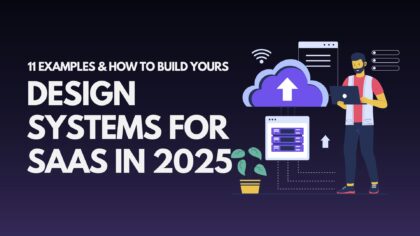7 Essential Design Systems for Seamless SaaS Product Development
In SaaS product development, speed, consistency, and user experience are everything. A well-built design system streamlines collaboration between design and development, reduces rework, and ensures a polished, scalable interface. It’s the foundation for faster rollouts and a cohesive brand experience. In this blog, we’ll explore the 7 key pillars of an effective SaaS design system.
Table of Contents
- Why Design Systems Matter for SaaS
- Benefits of a Design System
- 7 Essential Pillars of a SaaS Design System
- 3.1 Standardized UI Components and Patterns
- 3.2 User-Centered Design (UCD)
- 3.3 Robust Governance Framework
- 3.4 Modular Design Approach
- 3.5 Scalable Design for Growth
- 3.6 Integration with Modern Technologies
- 3.7 Continuous Feedback Loop
- 3.1 Standardized UI Components and Patterns
- Why Your SaaS Needs a Design System — Now
- Build Your Design System with Emerge Digital
At Emerge Digital, we’ve seen firsthand how a great design system can transform a SaaS product from “functional” to unforgettable.
If you run or manage a SaaS product, you already know — every screen, every click, and every interaction matters. Your users expect a seamless, intuitive, and visually consistent experience, no matter which feature they’re using. But without a proper design system, it’s easy to slip into chaos: mismatched styles, inconsistent UI components, and hours wasted on redoing the same elements.
That’s why we help SaaS brands build scalable, efficient, and beautiful design systems — so every product update, feature launch, or redesign happens faster, smoother, and with complete consistency.
In this article, we’ll share the 7 essential elements we recommend to any SaaS company looking to streamline product development and create a cohesive user experience that drives trust, loyalty, and growth.
7 Essential Pillars of a SaaS Design System
1. Standardized UI Components and Patterns
Consistency is one of the most important principles in UI/UX design for SaaS. When elements like buttons, forms, navigation menus, typography, and icons follow a unified visual language, users experience a smoother journey across the product. This leads to improved usability, reduced cognitive load, and a stronger sense of trust in the interface.
Well-documented UI component libraries—created in tools such as Figma, Sketch, or UXPin—allow design and development teams to work faster and more efficiently. Instead of recreating the same element for every new feature, teams can reuse predefined components that are already tested for accessibility, responsiveness, and cross-platform compatibility.
This approach not only speeds up production but also reduces design and technical debt, ensuring that as the product grows, it remains visually consistent and functionally reliable.
Key Benefits of Standardized UI Components:
- Faster feature development with reusable assets
- Consistent UI/UX patterns across all screens
- Accessibility compliance from the start
- Reduced long-term maintenance and redesign costs
- Stronger, more recognizable brand identity
2. User-Centered Design (UCD)
In SaaS product design, aesthetics alone don’t make a great product — usability and user satisfaction do. That’s why User-Centered Design (UCD) is a cornerstone of any high-performing UI/UX design strategy for SaaS applications.
With UCD, every feature, component, and interaction is shaped around your audience’s real-world needs, behaviors, and expectations. The process starts with in-depth user research, including persona creation, task analysis, interviews, and remote usability testing for SaaS platforms. These insights help design teams map complete SaaS user journeys and identify friction points before they become costly problems.
The focus is on building intuitive navigation flows, accessible interface layouts, and task-oriented design patterns that help users achieve their goals faster — all while maintaining a consistent brand experience. Accessibility is integrated from the beginning, ensuring compliance with WCAG accessibility guidelines and delivering inclusive SaaS UI design for users of all abilities.
Key Pillars of User-Centered SaaS UI/UX Design:
- Mapping end-to-end SaaS user journeys to remove friction points and enhance task efficiency
- Creating intuitive navigation structures for better information architecture in SaaS products
- Designing with accessibility-first UI principles to meet global WCAG standards
- Conducting iterative usability testing for SaaS applications to validate design decisions
- Balancing modern UI trends for SaaS with functional clarity to ensure high usability
3. Robust Governance Framework
Even the best UI/UX design system for SaaS needs governance to stay consistent. A clear framework defines how components, color palettes, typography, and interaction patterns are used across the product.
Strong governance also ensures accessibility compliance, maintains brand voice, and uses version control so design assets remain updated and easy to manage.
Core governance elements:
- Rules for component usage
- Brand and tone of voice guidelines
- Accessibility checklists
- Version control for UI assets
4. Modular Design Approach
A modular UI/UX design system for SaaS lets you create components once and reuse them across multiple screens and features. By breaking the interface into smaller, self-contained modules, teams can roll out updates faster and maintain a consistent user experience without redesigning from scratch.
Advantages of modular design:
- Faster product iterations
- Easier long-term maintenance
- Scalable design framework for future growth
5. Scalable Design for Growth
A scalable UI/UX design system for SaaS ensures your product evolves seamlessly as your business expands. Instead of redesigning with every update, a scalable system adapts to new features, emerging devices, and varying screen sizes — without compromising usability or brand consistency.
By implementing responsive design principles, flexible grids, and adaptable components, you can deliver the same polished experience whether your users are on a mobile app, desktop dashboard, or tablet interface. This approach not only supports long-term product growth but also saves time and resources during development cycles.
Why scalable design matters:
- Future-proofed product design that adapts to change
- Consistent UX across all devices and platforms
- Reduced redesign costs over time
6. Integration with Modern Technologies
A modern SaaS design system goes beyond style guides — it’s a fully functional, development-ready UI/UX framework. By integrating directly with front-end technologies like React, Angular, or Vue.js, design components can move seamlessly from design tools to production code without losing accuracy.
This alignment between design and development reduces handoff friction, ensures pixel-perfect implementation, and accelerates product releases. Developers work with pre-built, reusable UI components, while designers maintain visual consistency across the platform.
Why technology integration matters:
- Faster release cycles with ready-to-use coded components
- Consistent front-end implementation across pages and features
- Improved designer–developer collaboration for smoother workflows
7. Continuous Feedback Loop
A successful UI/UX design system is never a one-time project — it’s a living framework that adapts with your SaaS product. As user needs, technology, and market trends evolve, your design system should grow alongside them.
By establishing a continuous feedback loop, you can refine components, patterns, and guidelines based on real user behavior and team input. This ensures your product remains intuitive, accessible, and competitive over time.
Effective feedback methods include:
- Heatmaps & analytics to identify usability bottlenecks
- A/B testing for validating design decisions
- Usability studies to uncover friction points
- Internal design audits to maintain consistency and accessibility
Why Your SaaS Needs a Design System — Now
The SaaS industry in 2025 is more competitive than ever. Users expect pixel-perfect UI, lightning-fast performance, and seamless user experiences across web apps, mobile apps, and every device in between. At the same time, faster release cycles mean your product team needs to deliver updates at speed — without sacrificing usability, accessibility, or brand consistency.
Without a centralized UI/UX design system, you risk:
- Slower time-to-market due to rebuilding the same components repeatedly
- Inconsistent UI/UX that confuses and frustrates users
- Higher design and technical debt that slows future development
With a well-structured SaaS design system, you gain:
- A single source of truth for every visual and interaction pattern in your product
- Reusable UI components that speed up feature development
- Stronger brand identity through consistent typography, colors, and layouts
- Built-in accessibility standards that help meet WCAG compliance from day one
- Improved cross-team collaboration between designers, developers, and product managers
In short, a UI/UX design system isn’t just a design tool — it’s a strategic framework that keeps your SaaS product scalable, efficient, and competitive in a fast-moving digital market.
Build Your Design System with Emerge Digital
At Emerge Digital, we don’t just design — we engineer scalable UI/UX frameworks that accelerate development, eliminate repetitive work, and give your SaaS product a consistent, world-class look and feel.
Whether you’re launching your first SaaS MVP or scaling a complex enterprise platform, our design systems are built to grow with your product and your business.
Here’s how we help you future-proof your product:
- Audit your existing design workflow to uncover gaps and inefficiencies
- Create a custom UI component library tailored to your brand and user needs
- Set up governance and documentation so your system stays consistent over time
- Integrate seamlessly with developer workflows using tools like Figma, React, and Vue.js
- Embed accessibility best practices to meet WCAG standards from day one
Let’s talk about building a design system for SaaS that makes your product faster to build, easier to scale, and impossible to ignore.
Explore more
The 15 Best Sustainable Shopify Stores to Shop in 2025: Eco-Friendly Brands Leading the Way
15 Shopify Health Brands Redefining Wellness in 2025
15 Essential Features for Your Health and Wellness Store

About the Author
Priya, Co-Founder of Emerge Digital, is a UI/UX enthusiast with 15 years of experience. She’s passionate about crafting user-centered designs that exceed expectations, delivering meaningful and engaging digital experiences. At Emerge Digital, Priya blends her deep expertise with a commitment to client and user needs, driving innovative design solutions.
